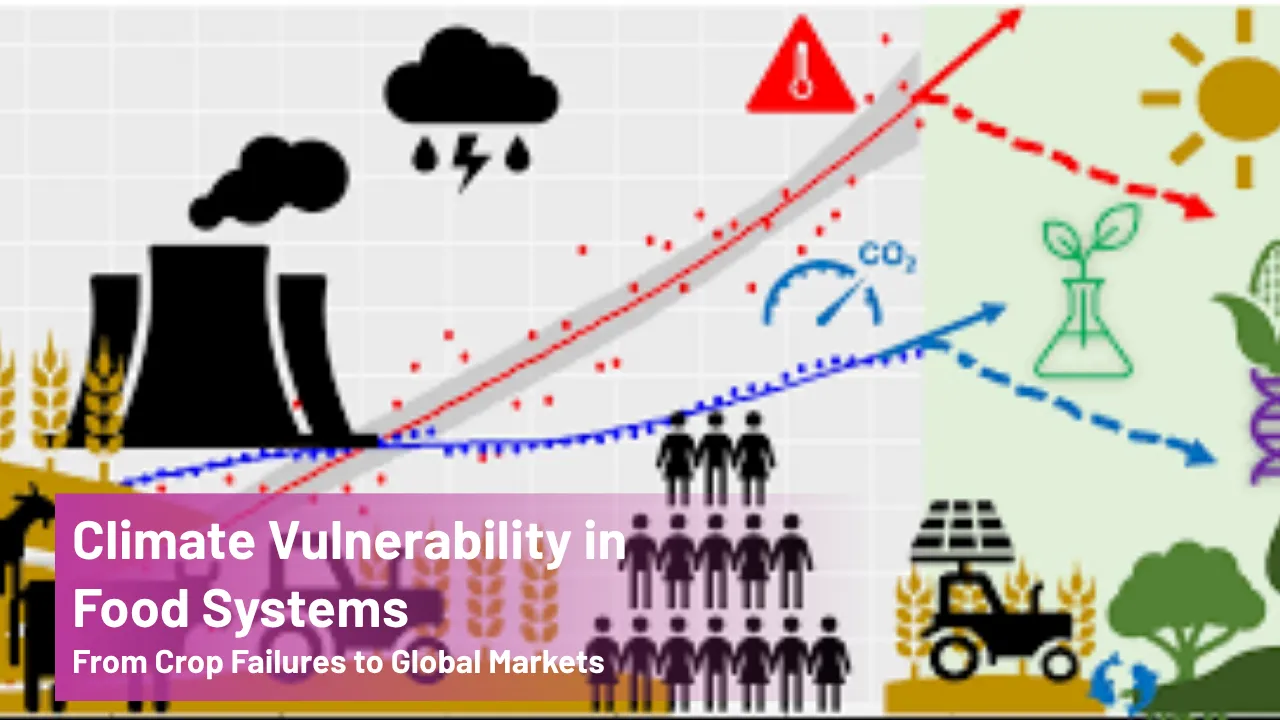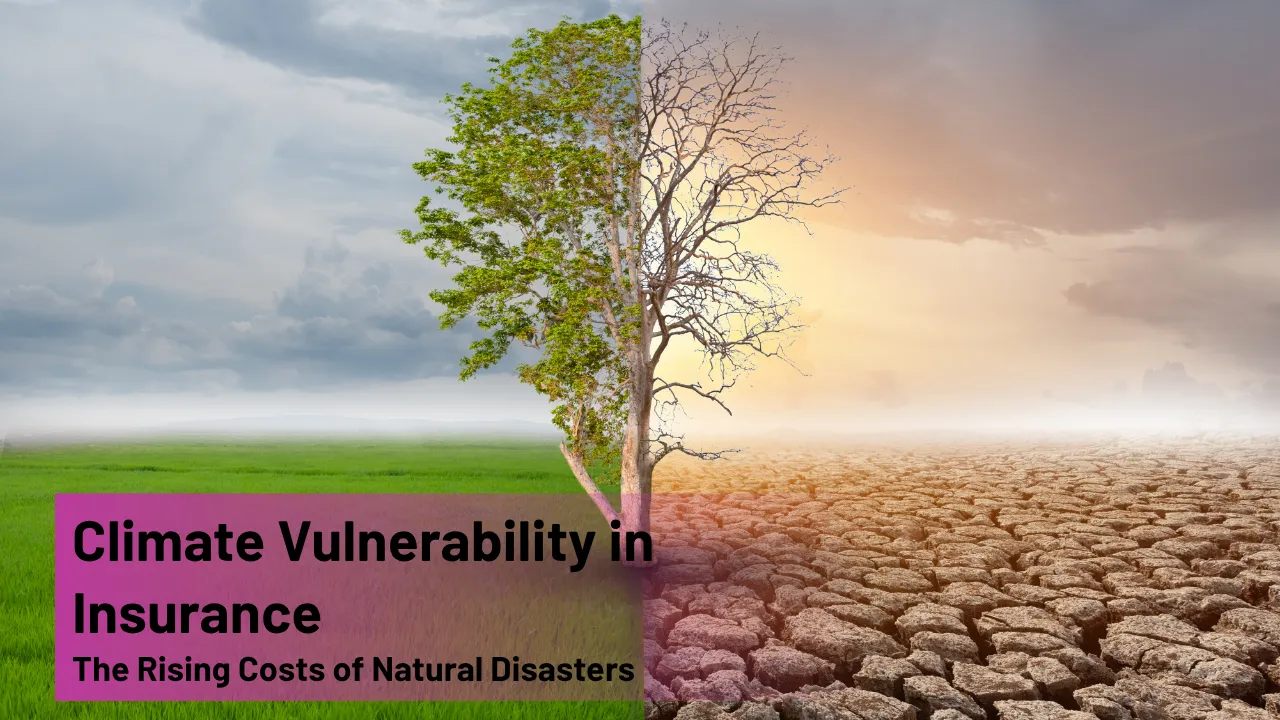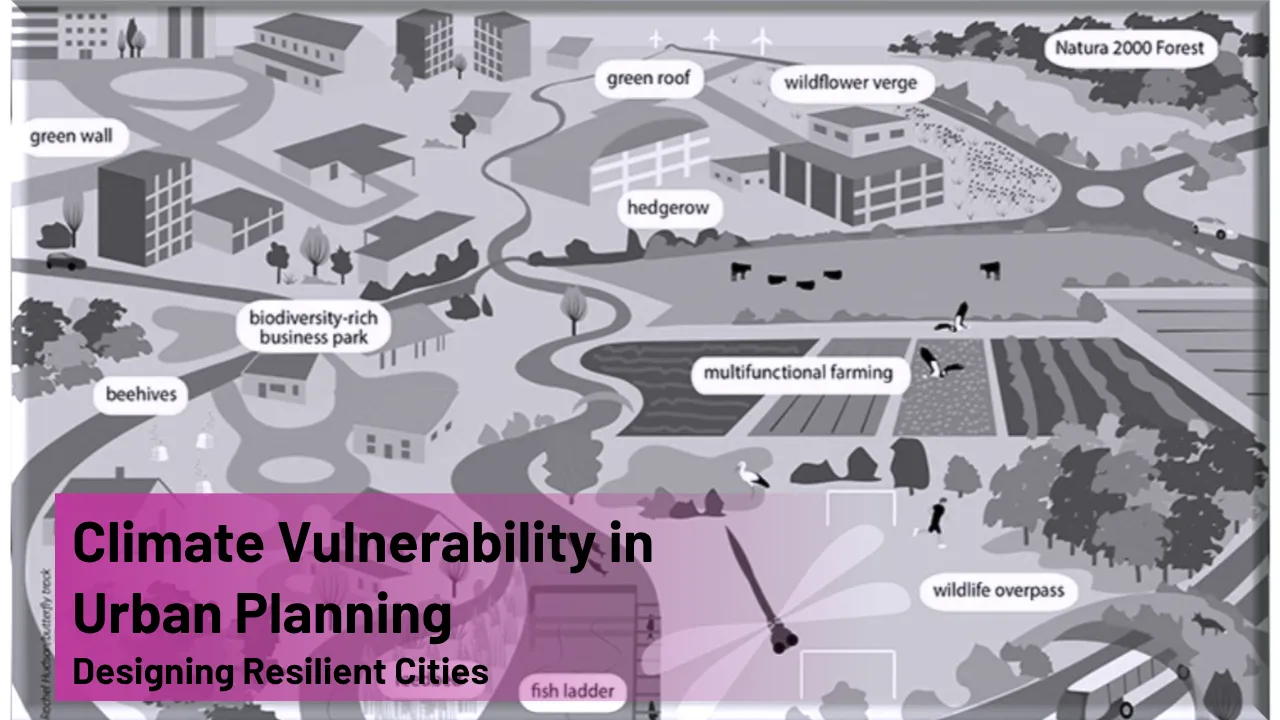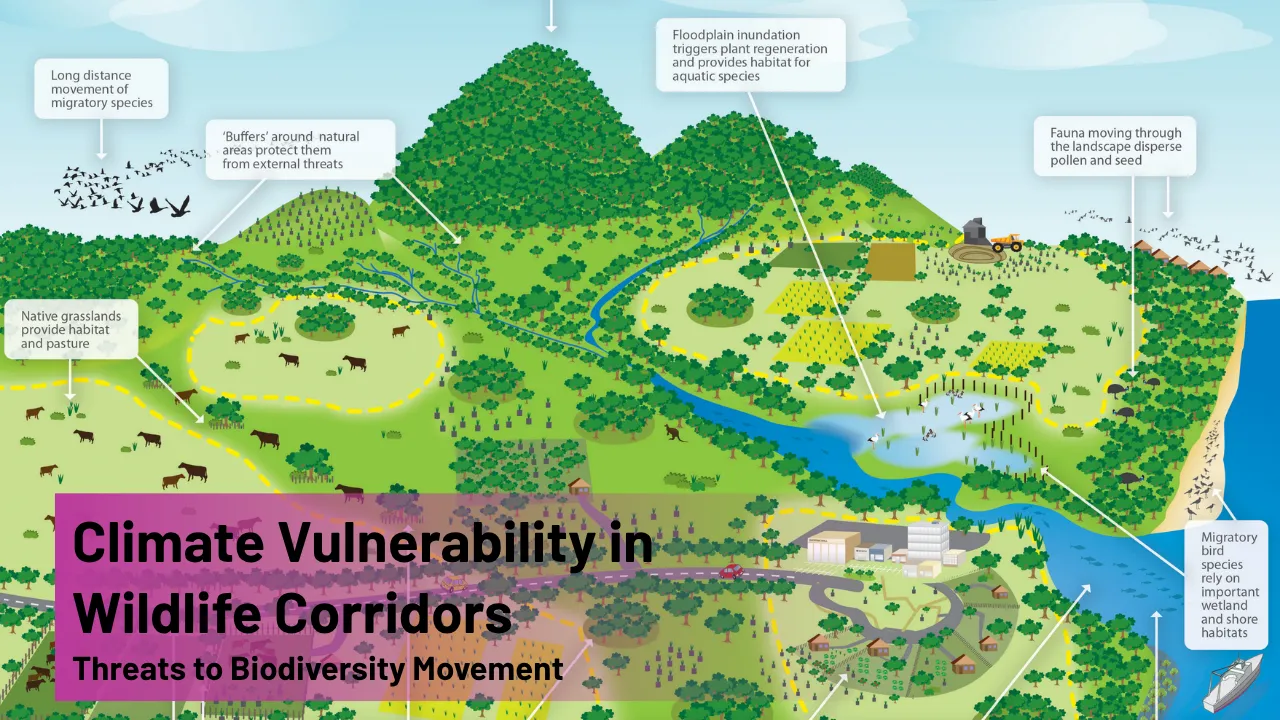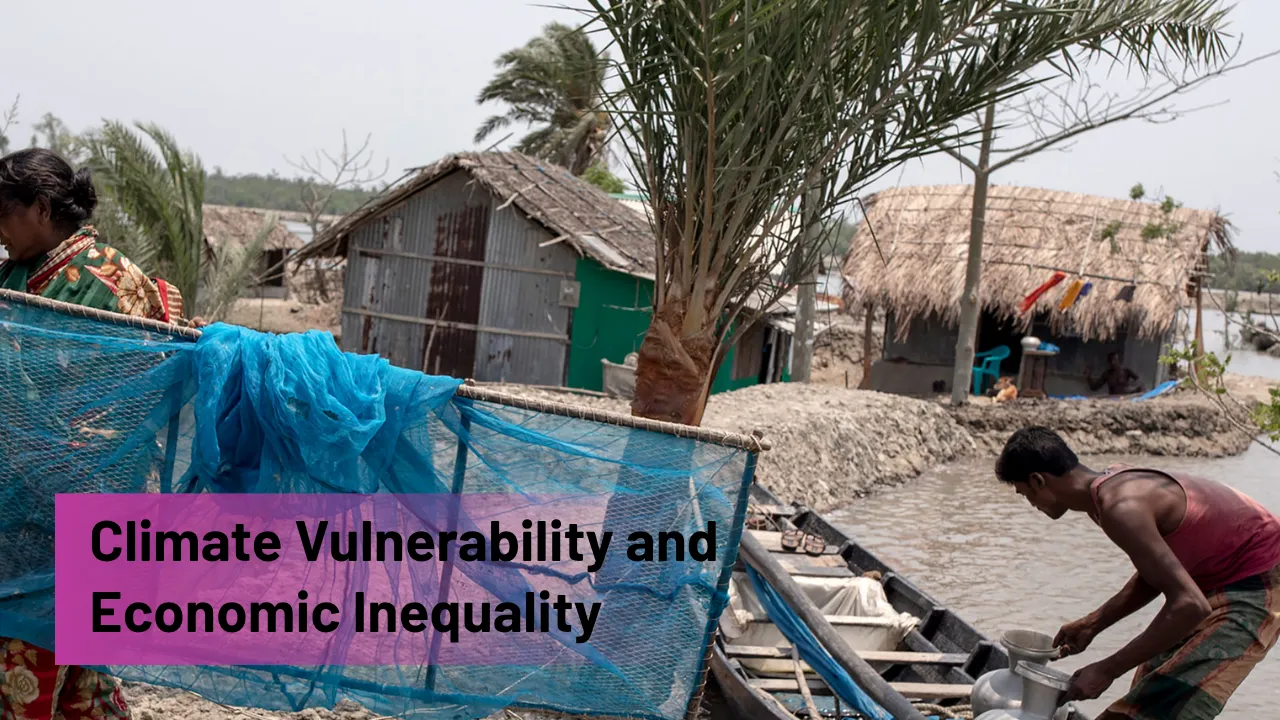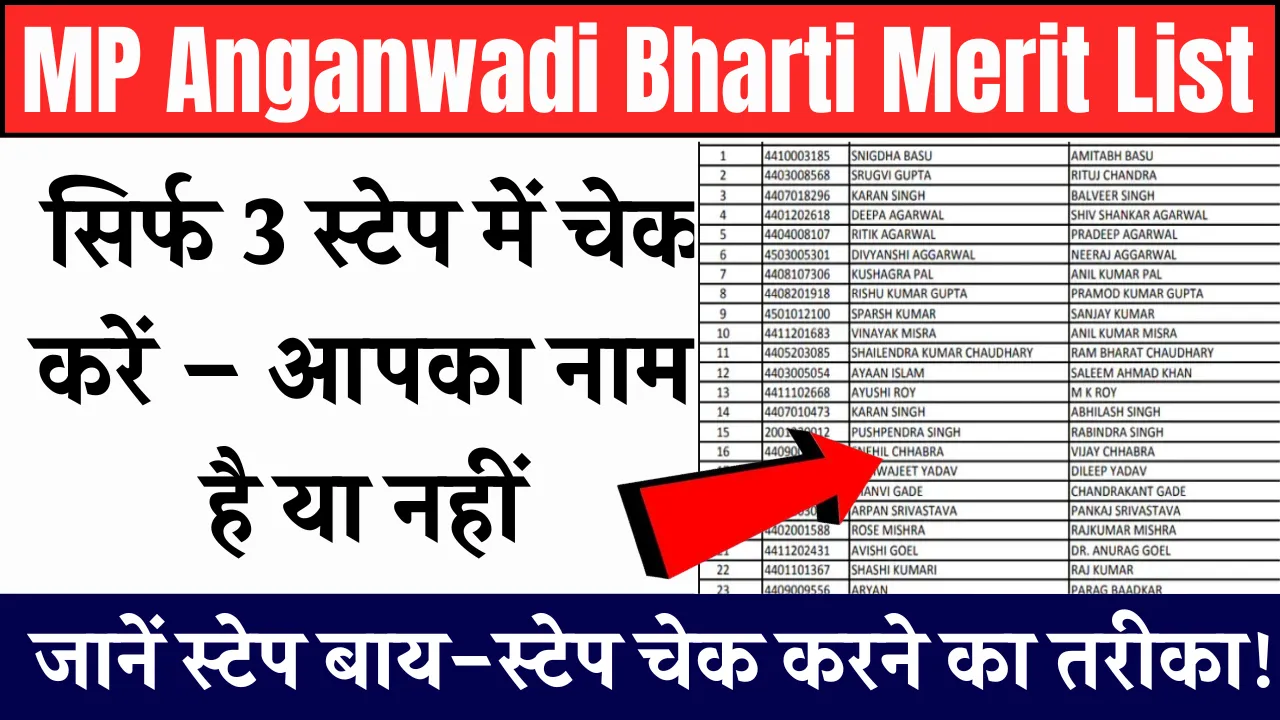Climate Vulnerability in Food Systems: Climate vulnerability in food systems is no longer a future concern—it is a present-day reality that continues to challenge global food availability and accessibility. Across regions, changing weather patterns, rising temperatures, and extreme events such as droughts, floods, and storms are directly affecting how food is produced, distributed, and consumed. These changes are causing uncertainty and strain across both local and global food systems.
This article delves into how the rising influence of climate change on agriculture and trade networks is reshaping everything from individual harvests to international markets. We explore how vulnerability within the food chain begins with failing crops and extends to high food prices and scarcity in marketplaces. With growing urgency, we examine key areas of impact, ongoing adaptation efforts, and what can be done to ensure resilience in the face of future climate disruptions.
Climate Vulnerability in Food Systems
The term climate vulnerability in food systems refers to the degree to which the global and local food networks are exposed and sensitive to changing climate conditions—and how capable they are of adapting. As weather becomes more unpredictable, these vulnerabilities become clearer, particularly in crop production, distribution, and storage. Rising risks are threatening food security worldwide, particularly in regions dependent on agriculture for income and sustenance. This vulnerability doesn’t just affect farmers—it affects everyone from food manufacturers to consumers, as climate risks ripple through supply chains, disrupt markets, and push food prices higher. Understanding this vulnerability is essential for developing effective solutions that strengthen resilience and ensure stable food access for future generations.
Overview of Climate Vulnerability in Food Systems
| Impact Area | Description |
| Crop Production | Reduced yields from droughts, heat, and unpredictable rainfall |
| Supply Chains | Disruptions due to extreme weather, damaged infrastructure |
| Global Food Markets | Volatility in prices and supply shortages |
| Food Security | Increased risk of hunger in vulnerable regions |
| Smallholder Farmers | Limited capacity to adapt to new climate conditions |
| Agricultural Resilience | Need for sustainable and adaptable farming practices |
| Policy and Governance | Importance of long-term planning and climate-sensitive strategies |
| Urban Food Access | Threats to city food supply due to rural climate stress |
How Climate Change Affects Food Production
Changes in temperature, rainfall patterns, and soil moisture directly influence crop growth and productivity. Heat stress, prolonged droughts, or sudden floods can destroy entire harvests. In key agricultural zones, these changes have already led to declining yields in staple crops like rice, maize, and wheat. Furthermore, rising carbon dioxide levels may reduce the nutritional quality of crops, making them less effective in meeting human dietary needs.
Another major challenge is the spread of pests and crop diseases. Warmer climates create favorable conditions for pests to thrive in new regions, adding additional pressure to already fragile ecosystems. This results in even greater losses for farmers and reduces the availability of food globally.
Impact on Global Food Markets
The instability caused by climate vulnerability in food systems extends far beyond the farm. Global food markets are deeply interconnected, meaning disruptions in one region can have cascading effects elsewhere. When extreme weather events affect major food-exporting countries, prices can spike globally. This disproportionately affects low-income countries that rely heavily on imports to meet food needs.
Markets also suffer from uncertainty. As climate risks intensify, food traders and investors are becoming more cautious, which increases price volatility. Events like the 2022 heatwaves in Europe and the floods in Pakistan led to short-term shortages and price surges that had global consequences. Food inflation becomes a real threat, particularly for nations already dealing with economic challenges.
Small Farmers Are at Greater Risk
Smallholder farmers form the backbone of food production in many developing countries, yet they are often the most exposed to climate risks. With limited access to credit, crop insurance, advanced technology, or weather forecasts, these farmers are ill-equipped to deal with rapid changes. A single failed season can lead to financial ruin and food insecurity.
Moreover, small farmers are less likely to have savings or access to social safety nets. Without outside support, they cannot invest in the tools and techniques needed for climate-resilient agriculture. This makes adaptation strategies—like drought-tolerant seeds or better irrigation systems—difficult to implement at the grassroots level.
Disrupted Supply Chains
Food doesn’t just need to grow—it needs to move. Climate-related disruptions affect every part of the supply chain: roads are washed away, ports are shut down, and storage facilities are damaged by storms or excessive heat. These interruptions delay the transport of food, especially perishables like fruits, vegetables, and dairy.
In a globalized food system, such disruptions mean entire communities may not receive timely supplies. It also increases the cost of distribution, which ultimately drives up consumer prices. Supply chain vulnerability is a hidden but significant threat under the broader umbrella of climate vulnerability in food systems, particularly as weather events become more frequent and intense.
Climate-Resilient Agriculture Practices
Farmers and researchers around the world are working to build resilience by adopting sustainable farming practices. These innovations aim to reduce vulnerability while improving yields and conserving resources. Key practices include:
- Conservation agriculture: Techniques like minimal tillage, cover cropping, and crop rotation help protect the soil.
- Agroforestry: Combining trees with crops or livestock improves biodiversity and prevents land degradation.
- Water-efficient systems: Using drip irrigation or harvesting rainwater to maintain moisture levels in dry seasons.
- Climate-smart seeds: Genetically improved varieties that resist drought, floods, or pests.
Adopting these methods doesn’t just help with adaptation—it can also mitigate emissions from agriculture, creating a win-win scenario for food security and the environment.
Key Points to Understand
1. Major Effects of Climate on Food Systems
- Yields are falling in areas facing more frequent droughts and heatwaves
- Pest infestations and crop diseases are spreading to new regions
- Post-harvest losses increase due to weather-damaged storage and transport
- Food availability becomes more uncertain and unevenly distributed
2. Solutions for Climate-Resilient Food Systems
- Provide targeted support to smallholder farmers
- Invest in infrastructure that can withstand extreme weather
- Encourage the use of drought- and flood-tolerant crop varieties
- Foster regional cooperation to manage food reserves and trade flows
Urban Areas and Food Access
Urban food security is becoming a growing concern, particularly as more people live in cities far from food production centers. As climate change damages crops and disrupts rural supply chains, cities may face shortages or price hikes that affect low-income households the hardest. Food deserts and poor access to fresh, nutritious food can worsen in this context.
Urban agriculture, such as rooftop farming or community gardens, provides a potential buffer. These practices not only improve local food access but also create green spaces and jobs. Strengthening links between rural and urban areas is key to ensuring that cities can continue to feed their growing populations sustainably.
Role of Governments and Policies
Effective policy-making is crucial to reducing climate vulnerability in food systems. Governments must develop long-term plans that support both mitigation and adaptation strategies. This includes investing in research, infrastructure, early warning systems, and financial services for farmers. Social safety nets and insurance schemes can help households recover from climate shocks more quickly.
International cooperation is equally important. Trade policies, emergency food reserves, and cross-border partnerships can buffer against local food shortages. Policy efforts should also prioritize the most vulnerable communities to ensure that adaptation is inclusive and equitable.
FAQs
1. What is meant by climate vulnerability in food systems?
It describes how sensitive and exposed food production and distribution systems are to climate changes and how well they can adapt.
2. Why are global food prices affected by climate events in one region?
Since food markets are globally connected, a drop in production in one country can lead to reduced supply and higher prices elsewhere.
3. How can smallholder farmers adapt to climate change?
With support like better seeds, irrigation systems, and training, small farmers can improve their ability to cope with climate stress.
4. What role do supply chains play in food system vulnerability?
When transportation or storage is disrupted by extreme weather, it delays food delivery and increases waste and costs.
5. Can urban farming help address food insecurity caused by climate change?
Yes, it boosts local food access, reduces transport needs, and makes cities more self-reliant.
Final Thought
As the climate crisis deepens, climate vulnerability in food systems will continue to shape our global future. From farmers struggling with failed crops to consumers facing rising food costs, the challenges are widespread and urgent. But solutions exist—and they begin with awareness, investment, and innovation. Supporting resilient agricultural systems, strengthening supply chains, and creating inclusive policies will help reduce vulnerability and secure food for future generations. Let’s move from vulnerability to resilience by making conscious choices and supporting sustainable food efforts. If this topic matters to you, explore your environmental impact or dive into your sustainable living path today.
